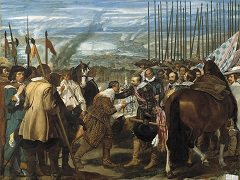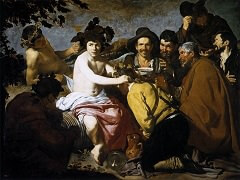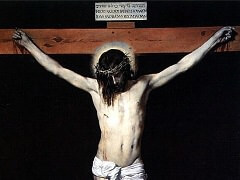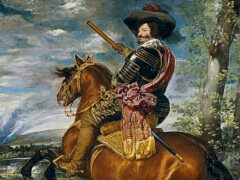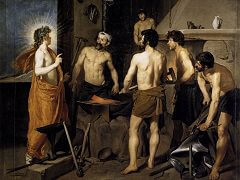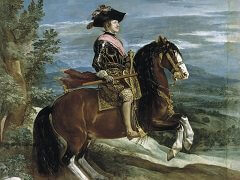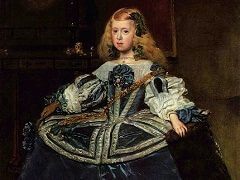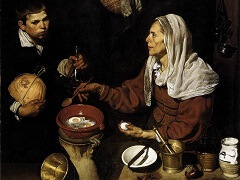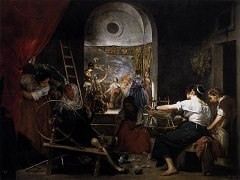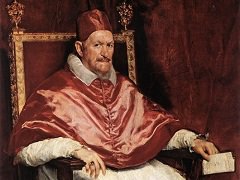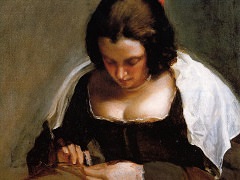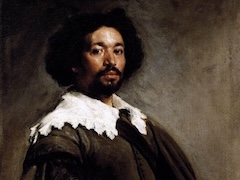Saint Paul, 1618-20, by Diego Velázquez
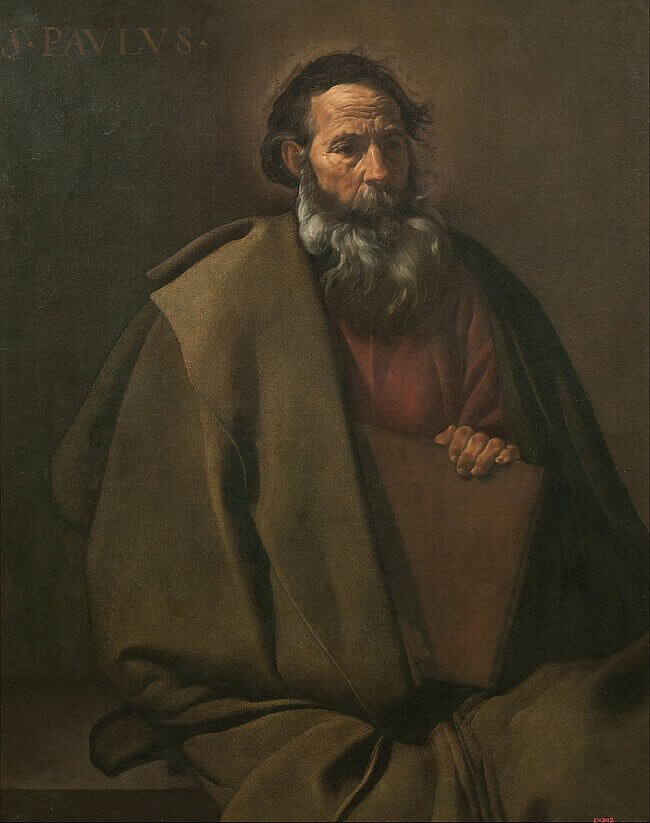
Velázquez painted Saint Paul between 1618 and 1620,.
The painting is from the early stage of Velázquez's career, when he was deeply influenced by Caravaggio. The artist from Seville reveals his mastery of portraiture in the image of a man captured directly from nature and wrapped in a wide robe in which the folds are almost sculptural. The figure of the saint is sitting on a stone plinth that blends with the background area. Perhaps to hide his limitations, Velázquez has hidden the legs and most of the hands under its folds. The color brown is a common feature of these years, as well as the lighting, both inherited from Tenebrism.
The fingers of the left hand timidly appear on the thick book that indicates his status as an apostle. Top, left, is the inscription S.PAVLVS, text that connects the person with the apostle, without showing the sword, his only known attribute. Moreover, although the aura of holiness is appropriate to the subject, the work also evokes the intellectual philosophers painted by Josá de Ribera.

